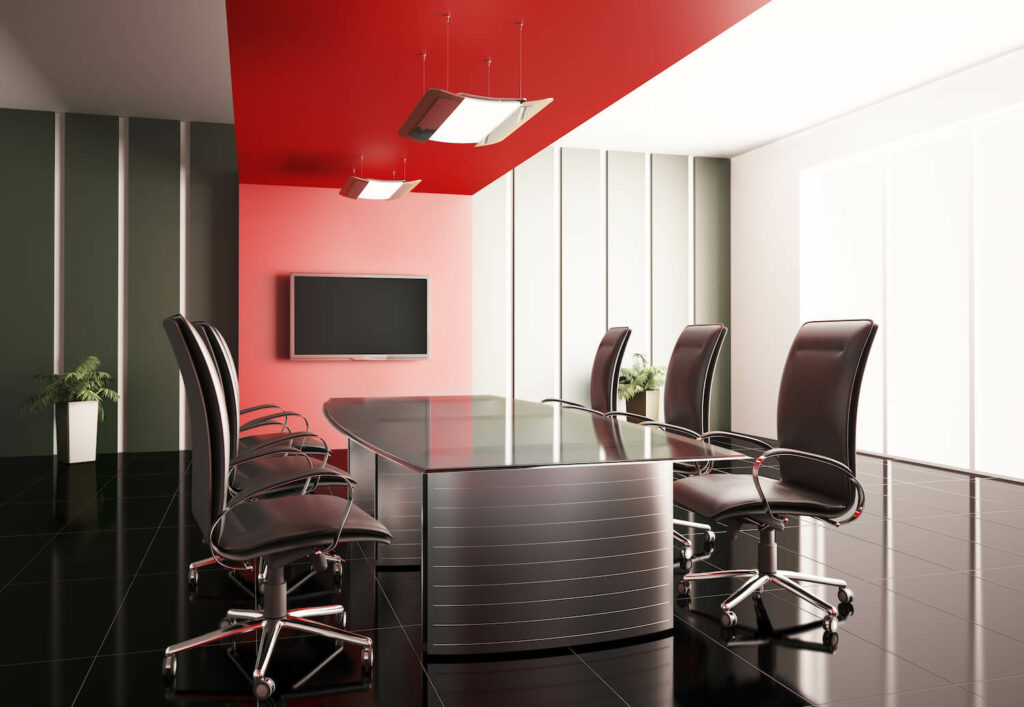
In the world of business, first impressions matter. When customers or clients enter your commercial space, the colors they see on your walls can have a significant impact on their perception of your brand. The psychology of color is a powerful tool in marketing, and choosing the right colors for your commercial space can help convey the right message and create the desired atmosphere. In this article, we will explore the importance of color in branding and provide you with a comprehensive guide on how to choose the right colors for your brand when considering commercial painting.
The Power of Color in Branding
Color is a universal language that communicates emotions, feelings, and even values without words. It can evoke strong emotional responses, influence decision-making, and create a memorable brand identity. When used effectively, color can enhance your brand’s recognition and help you stand out in a crowded market.
Here are some key factors to consider when it comes to the power of color in branding:
- Brand Identity: The colors you choose should align with your brand’s personality and values. For example, a luxury brand may opt for sophisticated and elegant colors like deep blues and gold, while a youthful and energetic brand might lean towards vibrant and playful colors like bright orange or green.
- Emotional Impact: Different colors evoke different emotions. Red can create a sense of urgency and excitement, while blue can convey trust and professionalism. Understanding the emotional impact of colors is essential in crafting the right perception for your brand.
- Recognition: Consistency in color usage across all branding materials, including your commercial space, helps reinforce your brand’s identity and makes it more recognizable to customers. Think of Coca-Cola’s iconic red or Starbucks’ green.
- Cultural and Regional Considerations: Colors can have different meanings in various cultures and regions. What might be a positive color choice in one part of the world could have negative connotations in another. It’s crucial to research and consider these factors if your brand has a global presence.
Now that we understand the significance of color in branding, let’s dive into the steps to choose the right colors for your commercial space.
Step 1: Define Your Brand Identity in Color
Before selecting colors, you need to have a clear understanding of your brand’s identity. What are your core values? Who is your target audience? What emotions do you want your brand to evoke? Start by creating a brand identity statement that encapsulates your brand’s essence. This statement will serve as a foundation for your color choices.
Step 2: Research Your Industry in Color
Analyze your industry and competitors. What colors are commonly associated with businesses in your sector? While it’s essential to stand out, straying too far from industry norms can confuse customers. Consider whether you want to align with industry standards or differentiate yourself through unique color choices.
Step 3: Identify Your Primary Brand Color
Your primary brand color will be the dominant color in your commercial space and across your branding materials. This color should resonate with your brand’s personality and values. It will become a visual representation of your brand. Think of the iconic Tiffany & Co. blue or McDonald’s red and yellow.
Step 4: Choose Accent Colors
In addition to your primary brand color, select one or two accent colors that complement and enhance it. Accent colors can be used for secondary branding elements, such as signage, furniture, or decorative elements. These colors should create a harmonious visual palette.
Step 5: Consider the Psychological Impact in Color
Delve into the psychology of colors to understand how they can influence customer perceptions. Here are some common associations:
Red: Excitement, energy, passion.
Blue: Trust, professionalism, calmness.
Green: Health, growth, relaxation.
Yellow: Optimism, warmth, friendliness.
Purple: Luxury, creativity, wisdom.
Black: Elegance, power, sophistication.
White: Simplicity, purity, cleanliness.
Orange: Playfulness, enthusiasm, creativity.
Step 6: Test and Gather Feedback
Before making your final color choices, create mock-ups or sample walls with the selected colors. Observe how they look in different lighting conditions and how they interact with other elements in your space. You may also seek feedback from employees, customers, or design professionals to ensure your choices resonate with your target audience.
Step 7: Ensure Practicality
While aesthetics are essential, don’t forget about practicality. Consider factors such as maintenance, durability, and cleaning when selecting paint finishes and colors. For high-traffic areas, you might opt for easy-to-clean, durable paints in your chosen colors.
Step 8: Test in Real Environment
Before committing to painting your entire commercial space, it’s advisable to test the selected colors in the actual environment. Paint a small section or a test wall to see how the colors appear in your space’s lighting conditions. This step can help you avoid costly mistakes.
Step 9: Brand Consistency
Consistency is key in branding. Ensure that the colors you choose for your commercial space align with your branding across all touchpoints, including your website, marketing materials, and products. A consistent color scheme reinforces your brand’s identity.
Step 10: Monitor and Adapt
Branding is not static. As your business evolves, your branding might need adjustments. Periodically review your brand’s colors to ensure they still reflect your values and resonate with your target audience. Don’t be afraid to make changes when necessary.
Examples of Effective Branding through Color
Let’s look at some examples of well-known brands that have effectively used color to convey their identity and connect with their audience:
- Apple: Apple’s use of clean, minimalist design and a sleek color palette of white and silver conveys simplicity, innovation, and sophistication. This choice of colors aligns with the brand’s core values.
- Coca-Cola: Coca-Cola’s iconic use of red is synonymous with excitement, energy, and happiness. The brand has successfully capitalized on the emotional power of color for decades.
- IKEA: IKEA uses a combination of blue and yellow in its branding, which creates a sense of trust, reliability, and affordability. The colors reflect the company’s Swedish origins and its commitment to providing quality products at reasonable prices.
- Whole Foods Market: Whole Foods Market incorporates green in its branding to symbolize health, sustainability, and natural products. This color choice aligns perfectly with the company’s focus on organic and eco-friendly offerings.
- Disney: Disney’s use of cheerful and vibrant colors like red, yellow, and blue appeals to a wide audience, especially children. These colors create a sense of joy, magic, and nostalgia, making Disney a beloved brand worldwide.
Maintaining Color Integrity
Once you’ve established your brand’s color palette and applied it to your commercial space, it’s crucial to maintain color integrity. This means ensuring that the colors appear consistent across all materials and surfaces. To achieve this, work closely with professional painters who understand the importance of color accuracy and can expertly mix and apply the chosen shades.
Additionally, consider the impact of natural and artificial lighting on your selected colors. The lighting in your commercial space can significantly alter how colors are perceived. Be sure to test your color choices under different lighting conditions to ensure they maintain their intended effect. Some colors may appear warmer or cooler depending on the lighting, so it’s essential to strike the right balance.
Flexibility in Design
While having primary color and accent colors is essential for branding consistency, it’s also beneficial to allow for some flexibility in your design. Depending on the season, trends, or special promotions, you may want to introduce temporary color variations or themed decor. This adaptability can breathe new life into your commercial space and keep it exciting for both regular and new customers.
Color in Different Commercial Spaces
Keep in mind that the appropriate color scheme can vary depending on the type of commercial space you’re dealing with. For instance:
- Retail Stores: Retail spaces often benefit from vibrant, attention-grabbing colors that encourage browsing and impulse buying. Consider the type of products you sell and your target demographic when choosing these colors.
- Restaurants: The colors in a restaurant play a significant role in the overall dining experience. Warmer tones like reds and browns can create a cozy, inviting atmosphere, while cooler blues and greens can evoke a sense of calm and cleanliness.
- Office Spaces: Offices typically lean toward neutral and calming colors like blues, grays, and whites to promote productivity and focus. However, you can incorporate your brand’s colors into office decor through accent walls, furniture, or artwork.
- Healthcare Facilities: Healthcare spaces often opt for soothing colors like pastel blues and greens to reduce anxiety and create a healing environment. A clean and sterile appearance is also crucial in these settings.
Sustainability and Color Choices
In today’s environmentally conscious world, sustainable practices and eco-friendly choices are highly valued by consumers. Consider how your color choices align with your commitment to sustainability. Look for paint brands that offer low-VOC (Volatile Organic Compounds) or zero-VOC options. These paints are not only better for the environment but also promote a healthier indoor air quality for your customers and employees.
Conclusion
Choosing the right colors for your commercial space is a multifaceted process that goes beyond aesthetics. It’s about creating a cohesive brand identity, connecting with your target audience, and conveying the right emotions and values. By carefully selecting colors that align with your brand’s identity, maintaining color integrity, and considering the specific needs of your commercial space, you can enhance your brand’s presence and leave a lasting impression on anyone who walks through your doors.
In today’s competitive business landscape, every detail counts, and color is a powerful tool at your disposal. Invest the time and effort to choose your commercial painting colors thoughtfully, and you’ll reap the rewards of a strong, memorable brand that resonates with customers and sets you apart from the competition.
Read Other Blog Posts
Shield Your Investment: How Fresh Exterior Paint Extends Home Longevity
A fresh coat of exterior paint...
From Vision to Reality: Design Your Dream Home with Color Consultants
Designing your dream home is a...
From Drab to Fab: The Power of Professional Deck and Fence Staining Services
Decks and fences serve as...
Time is Money: How Hiring Professional Painters Saves You Both
In the fast-paced world we...
The Psychology of Color: How Paint Colors Affect Your Mood and Behavior
Colors have a profound impact...
Perfect Prep: Do You Need Professional Drywall Repair Before Painting?
Achieving a flawless paint job...






